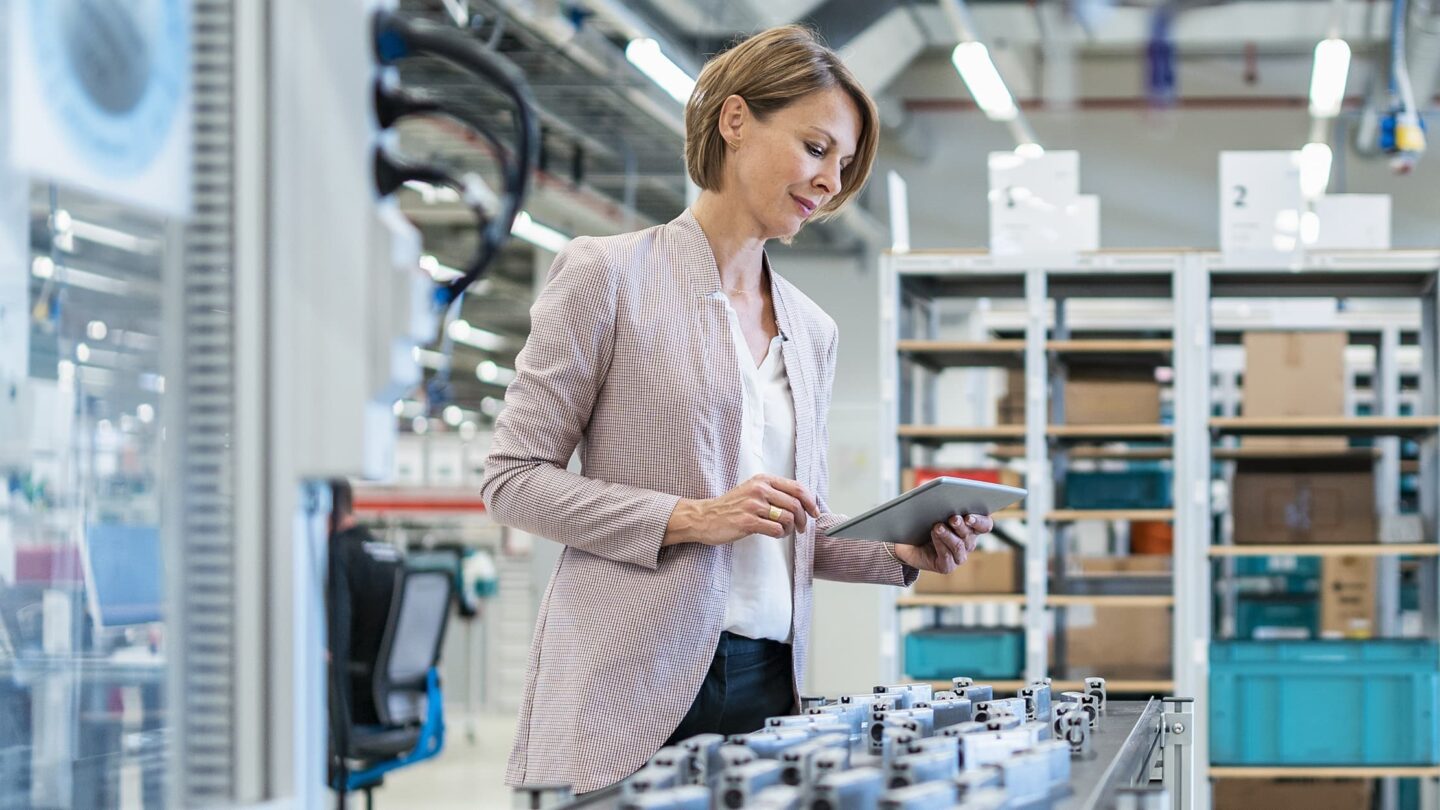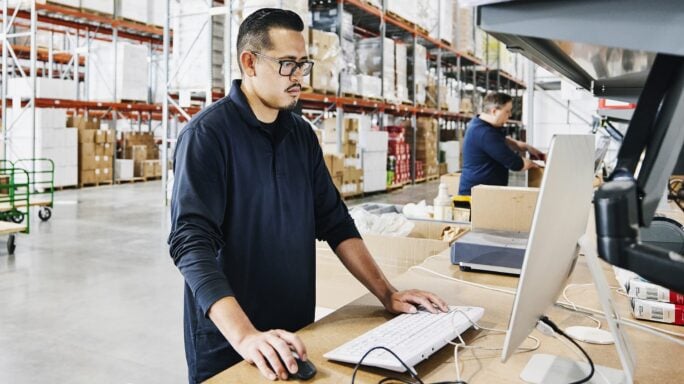Business planning
How manufacturers can unlock value from the circular economy

Manufacturers have a huge opportunity to capitalise on the benefits of the circular economy. In a time of climate crisis and reliance on natural resources, a circular economic model could not only contribute to a greener future but also strengthen market competition and benefit your business by meeting consumer demand for environmental solutions.
But what exactly is the circular economy? In this article, we unpack the difference between a linear and circular economy and how the latter benefits manufacturers.
Linear vs circular economy
In a traditional linear economy, you make, consume, and discard products. Moving to a circular economy is all about designing a circle that eliminates waste and pollution by extending the life of products and materials and finding ways to create new resources from what we discard.
On the other hand, the circular economy eliminates waste through a cyclical model of making, using, returning, recycling, and reusing.
Business models based on the circular economy will likely become more common in the future. Gartner predicts that the circular economy will be the sole economy by 2029, replacing wasteful linear economies. According to the analyst, this is due to a shift in consumer and shareholder preferences towards sustainability, and the supply chain will play a key role in this process.
How does the circular economy benefit manufacturing?
The circular economy has the potential to transform how manufacturers operate by ‘designing out’ waste during the design phase before a product is used.
According to the Ellen MacArthur Foundation, the manufacturing industry could save between 10% and 15% on direct materials used in production.
The key is to stop thinking of the circular economy in terms of improved waste management. Instead of focusing solely on product functionality and cost, manufacturers should consider the entire lifecycle of their product, maximising material usage and reducing waste through refurbishment, remanufacturing, recycling, and deconstruction.
Refurbishment and remanufacturing
Refurbishing and remanufacturing involve the industrial processing of used parts to bring them up to the same standard as new parts, allowing manufacturers to save money and compete at a lower price than their competitors without sacrificing quality.
Instead of discarding used smartphones, manufacturers can repair them, install new software, and resell them to people who do not require or desire a brand-new device.
Manufacturers benefit because they get the most out of their assets, which means that profits continue even after a product or component has reached its “end of life.”
In this way, they can reduce the cost of doing business by remanufacturing components for customers at a fraction of the cost of purchasing a new one. In fact, rebuilding components can use 50% to 60% less energy and shave up to 60% off the cost of a new component.
Recycling
Manufacturers can save money by recycling product components and reusing them in new products rather than using raw materials.
Using the circular economy approach, they can create durable and recyclable products while remaining profitable.
This could imply that products are designed in the early stages of development to be as resource- and eco-friendly as possible regarding carbon dioxide consumption, pollutants, and waste materials.
By reducing the materials required for production, manufacturers can also reduce their exposure to rising and volatile resource prices, such as those associated with fossil fuels and metals.
Deconstruction
From a circular economy standpoint, proper deconstruction makes sense for products made of various material types, not only for environmental reasons but also because materials with monetary value can be salvaged.
Mattresses, for example, often comprise various materials, such as steel, foam, cotton, and polyester. Some of these materials can be reused when the useful life of the mattress is over. On their own, polyester and cotton, for example, have secondary market value, but when both are mixed in a mattress filling, they are rendered useless.
Manufacturers must therefore consider product lifecycles and design products that adhere to circular economy principles. The secondary market value must also be considered when designing products that have monetary value at the end of their useful life.
Other circular business models
Leasing
Leasing is a contractual agreement in which the user of an asset pays the owner for its use. In this context, we frequently refer to real estate, buildings, and vehicles, but industrial equipment is also leased. Manufacturers must maintain responsibility for sustainable products not only after they are leased but also when they are returned.
Performance-based services
In this business model, the manufacturer retains ownership of a product while providing a service based on its performance outputs, such as data on availability, maintainability, efficiency, and reliability (as measured by the Internet of Things). As an example, instead of owning the washing machine, the customer would pay for the benefits of using it (i.e., the act of washing clothes).
Incentivised return
A company provides a financial incentive for the return of used products such as electronic equipment. These items could then be repaired and resold.
Asset administration
Businesses can increase the life of their products and reduce the need for new purchases by tracking their assets and deciding what can be reused, repaired, or redeployed. For example, they could repurpose their assets as part of an asset-sharing platform, where they contact other businesses to share assets they can’t justify purchasing.
Collaborative consumption
Renting or sharing products between members of the public or businesses, often via peer-to-peer networks, is one method of reducing waste. Car-sharing services, for example, are available for people who do not need or want to spend money on a car.
The technology of the circular economy
Industry 4.0 holds tremendous potential for enabling a circular economy in which end-of-life products are reused, remanufactured, and recycled.
Companies are increasingly implementing innovative solutions, such as the Internet of Things, cloud computing, miniaturisation, and 3D printing, to enable greater interoperability and flexibility in industrial processes and autonomous and intelligent manufacturing.
- Cloud computing: With cloud solutions, the software manages aspects of the manufacturing process, such as system infrastructure, operating system, database, and applications.
- The Internet of Things: Manufacturers can now connect products they develop to the cloud, analyse performance, and collect usage data using the Internet of Things. This enables them to remotely monitor and analyse products and create long-lasting, durable products that reduce waste. Furthermore, data can be used to improve the efficiency of circular strategies such as recycling.
- Artificial intelligence and automation: AI and automation have the potential to accelerate the transition to a circular economy at scale in three areas: product design, operations, and infrastructure operations. AI, for example, enables the development of new products through machine-assisted design processes, accelerates prediction analysis and smart inventory management, and improves remanufacturing and recycling.
- Robotics: In manufacturing, human error frequently leads to product errors. Manufacturers can increase yield, reduce waste, and extend a product’s life by using robots in many applications.
- 3D printing: With 3D printing, manufacturers can create spare parts on-demand, extending the life of products or equipment and reducing the need to keep stock on hand.
Servitisation: Offering added services
To capitalise on the circular economy, businesses can shift their business models from simply selling products to providing customers with resource efficiency-related services.
Previously, transitioning to a circular economy meant reducing waste to save money. It is time to focus on creating commercial opportunities to increase revenue by bringing new and more resource-efficient services to market, i.e., ‘servitising’ your offerings.
Servitisation entails integrating your products with potential new services and adapting your business models to add value to what you produce. Servitisation has the potential to increase customer loyalty while also providing more stable revenue streams.
Manufacturers should consider the following levels of servitisation:
- Level one: Providing spare parts or consumables.
- Level two: Participating in the scheduling, maintenance, and monitoring of the equipment they sell.
- Level three: At the most advanced level, the manufacturer visits the customer and offers products and solutions to help with their business operations. Rather than charging or selling directly, a risk and revenue-sharing agreement may be used.
Final thoughts
Customers and government agencies are putting pressure on businesses to be more environmentally conscious.
Many of your customers will be aware of the environmental impact of sustainable businesses. Thanks to the availability of information, they will be able to determine if you are not adhering to sustainable principles or attempting to reduce the environmental footprint of your products.
Manufacturers can have a significant impact on climate change by improving the efficiency of their industrial systems, which is much faster and easier than changing consumer behaviour, which is far more difficult.
Move beyond ERP with Sage X3
Take control of your entire business.
From supply chain to sales with Sage Business Cloud X3. Software for established businesses looking for greater efficiency, flexibility, and insight.








Ask the author a question or share your advice